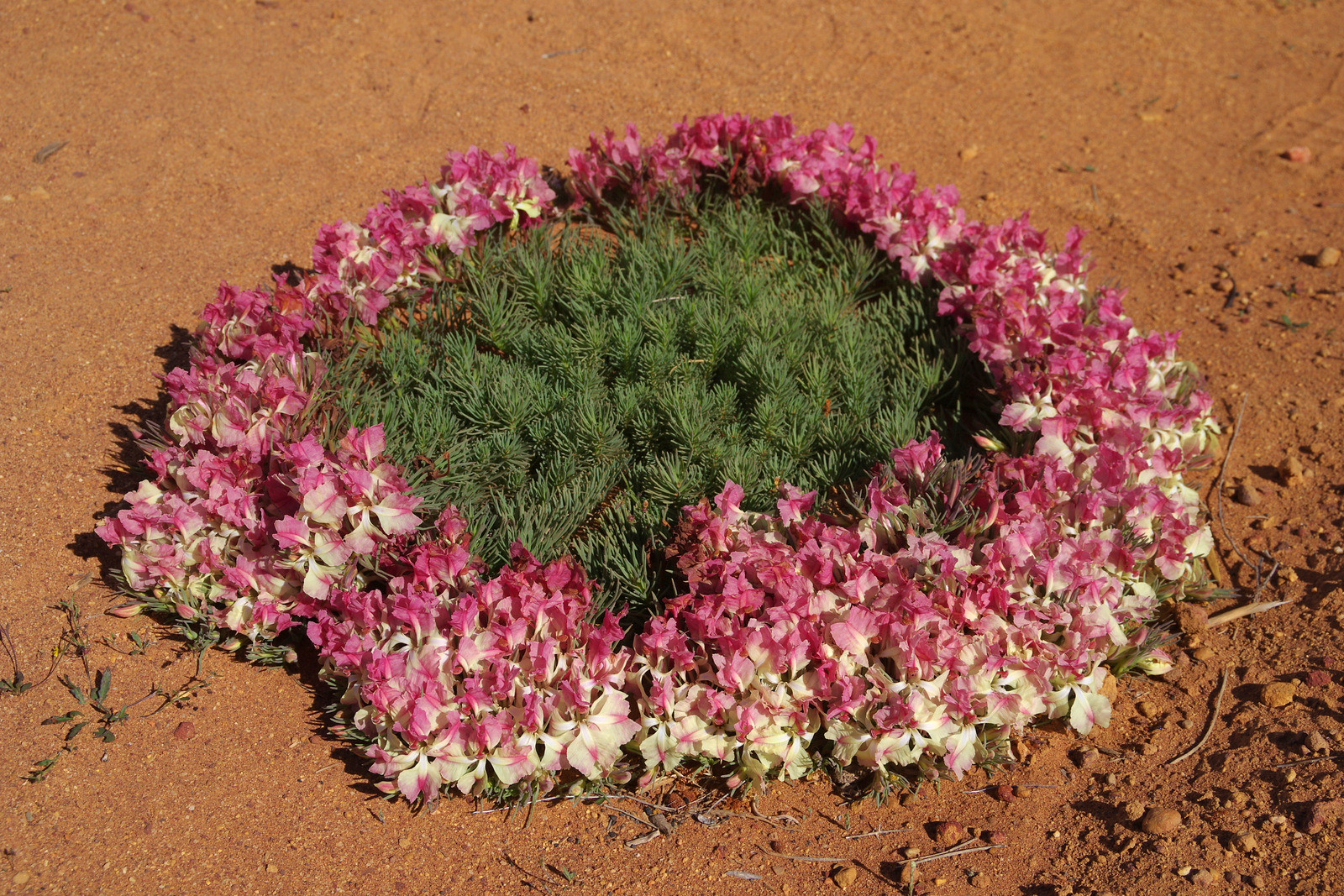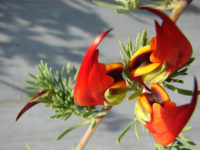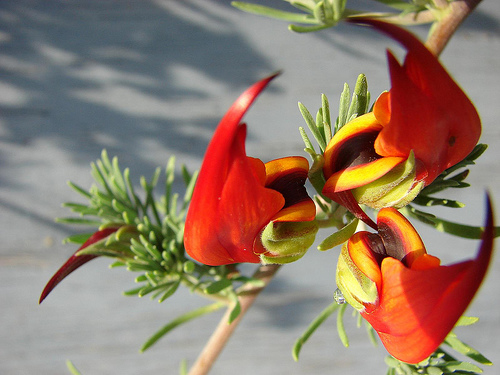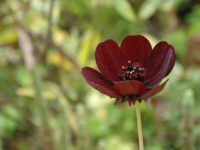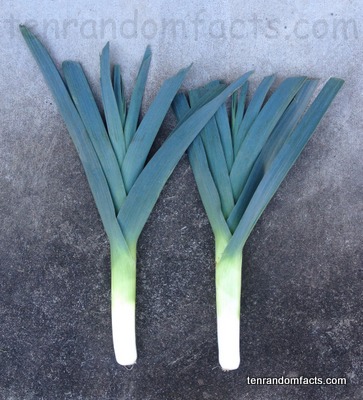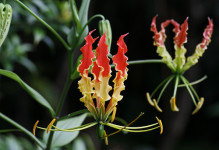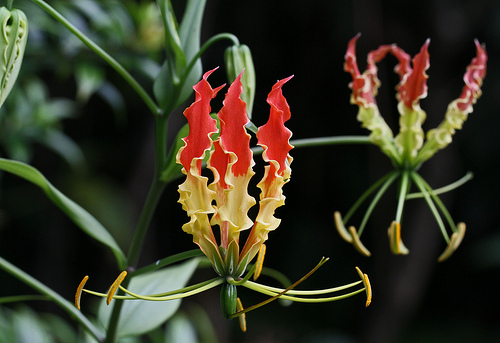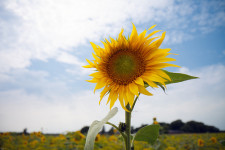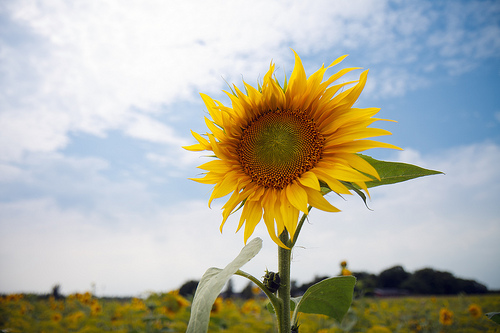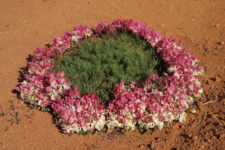
Wreath lechenaultias really brighten up the Australian desert.
- Wreath lechenaultias are perennial plants, native to the woodland and desert habitats of the Southwest Australia savanna area, located in
the Australian state of Western Australia. - The scientific name of a wreath lechenaultia plant is Lechenaultia macrantha and it is from the family Goodeniaceae, a family of flowering plants.
- Wreath lechenaultias generally grow to a height of up to 15 centimetres (6 inches) and reach a diameter of 1 metre (3.3 feet).
- The blooms of wreath lechenaultia plants typically range from pink to red, and they are a white or yellow colour in the middle.
- Wreath lechenaultias grow best in full sun and in a fairly dry, well-drained soil that consists of sand or small pebbles.
A Wreath Lechenaultia
Image courtesy of Derrin Images
- Wreath lechenaultia plants bloom during late winter months and spring, and the flowers are usually produced around the outer edge of the plant, forming a wreath-like shape around the foliage.
- Each flower of the wreath lechenaultia plant consists of five petals and is roughly 3 to 3.5 centimetres (1.2 to 1.4 inches) in diameter.
- Wreath lechenaultias are commonly grown for decorative purposes, both on the ground or in hanging baskets, though they tend to be difficult to grow.
- Kurt Krausse, a German botanist, was the first to scientifically describe the wreath lechenaultia, doing so in 1912.
- Wreath lechenaultia plants tend to sprout after the event of a bushfire, and new plants can be grown from cuttings.
Bibliography:
Lechenaultia Macrantha, 2010, Wikipedia, https://en.wikipedia.org/wiki/Lechenaultia_macrantha
Lechenaultia Macrantha, 2016, Australian native Plants Society (Australia), http://anpsa.org.au/l-macr.html
Lechenaultia Macrantha (Wreath Lechenaultia), 2016, Home Design Directory, http://www.homedesigndirectory.com.au/gardening/plant-finder/plant-descriptions/lechenaultia-macrantha/?plant-id=449
Lechenaultia Macrantha – Wreath Lechenaultia, n.d, Gardening With Angus, http://www.gardeningwithangus.com.au/lechenaultia-macrantha-wreath-lechenaultia/




